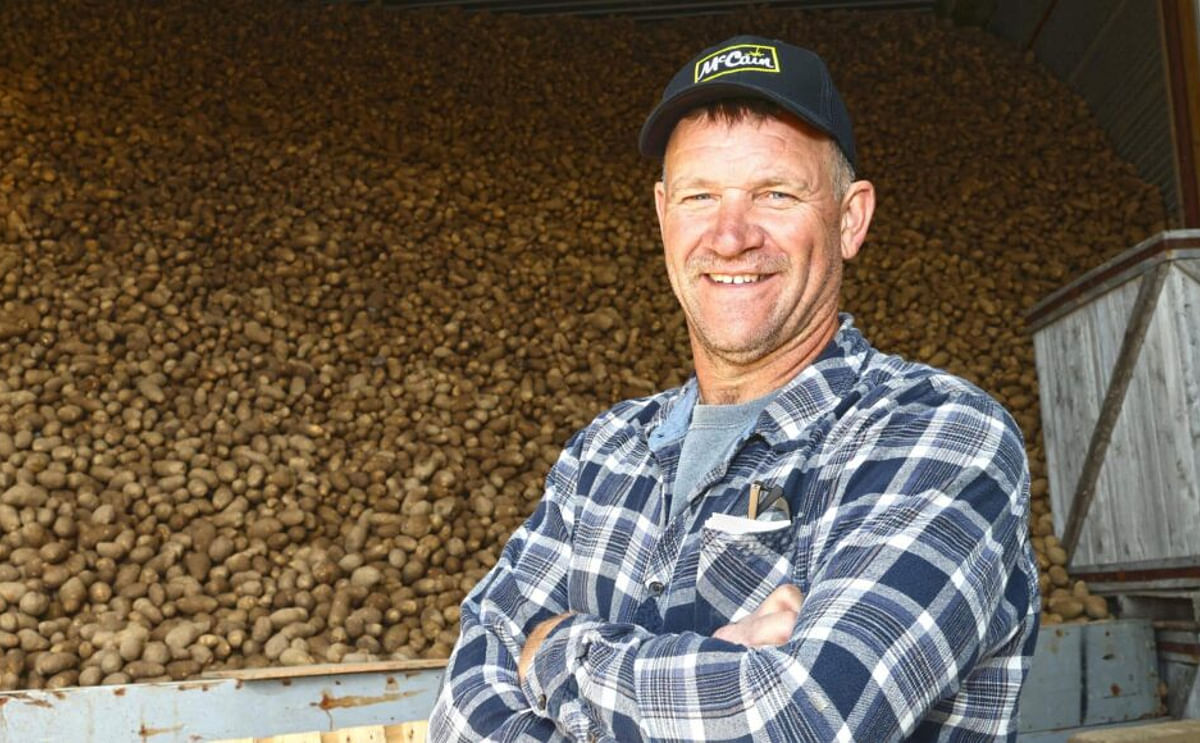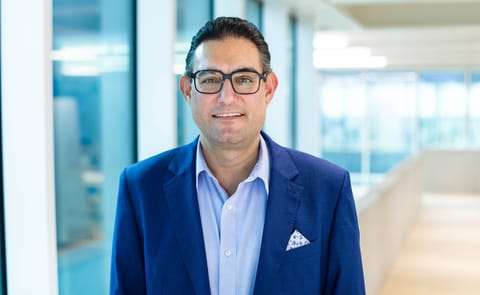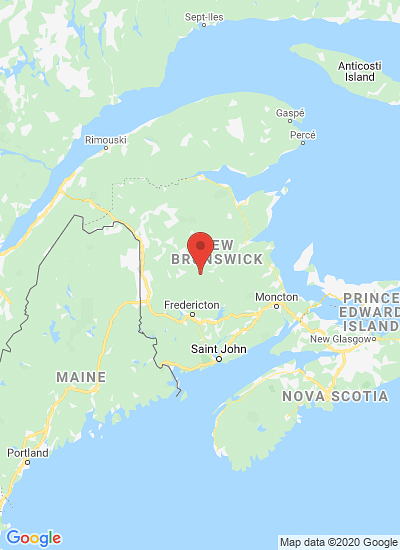McCain Foods potato grower Alyre Poitras at his farm Les Fermes Lionel & Alyre Poitras ltee in Saint-André, N.B. (Courtesy: Dave Bailey, McCain Foods)
Moving Forward with the Next Generation on Regenerative Agriculture

Alyre Poitras is a McCain Foods potato grower in Saint-André, New Brunsiwck, Canada. He shared his experience with regenerative agriculture and the changes in potato cultivation over time
Alyre Poitras:
Alyre Poitras:
"It’s funny how situations can repeat themselves. When I first finished university and came home to work on the family farm with my father Lionel, I would suggest changes we should make. I was young and believed there was a better way for us to farm our land and grow potatoes."
"One of the big changes I pushed for was to purchase a new potato planter, so we could increase our efficiency and crop yields. In the early 1990s we bought a new potato planter, and then almost 30 years later I was sitting there as my son Paul told me the exact same thing."
"He told me there were planters that would increase our efficiency and crop yields (where had I heard that before). I said OK and we bought a new planter, which has increased the yields on our potato crops."
"Paul hasn’t just pushed for a new planter, he’s also urged for us to switch how we grow potatoes on our farm, Les Fermes Lionel & Alyre Poitras ltee in Saint-André, N.B. It’s scary to try new things but in the long run we feel they’re going to pay off. Mostly Paul wants us to move towards more regenerative agriculture practices."
"This year we planted all our potato acres with a basket hiller behind the potato planter. I was nervous to plant ALL our acres this way and wanted to experiment by planting one field half-and-half — half the new way and half the old way with hilling done after planting."
"But Paul assured me this was the way to go. Well shocker Paul was right. We saved time and fuel during the busy planting season and having just dug up the crop, I am impressed with the results."
"Another change we’ve made on our farm is how we handle our crop rotations. We used to trade land with a dairy farmer in the area — he would spread manure on our fields. And while that did have some fertilization advantages, we were finding the fields were wet for longer in the spring and the soil was getting compacted from the extra tractor passes in the field."
"We’re trying out new rotation crops such as sorghum-sudan grass, triple mix, and a 50 mix from McCain Foods, to reduce compaction and help us to get into the fields earlier in the spring. Paul wants to adjust the rotation crops to whatever the field needs."
"We had problems with verticillium bromham in a field, so he decided we should plant brown mustard in the field. We planted 100 acres of brown mustard last year, dug it up and then planted a potato crop in the field this year and haven’t had one issue with verticillium yet."
"We’re doing a lot of soil sampling in our fields to keep track of what is working and what isn’t working. We do grid sampling in new or "problem" fields — this is where we take a soil sample every 100 feet to check pH levels, magnesium, calcium, etc. We’re still new to this regenerative ag world, but I’m enjoying learning from my son, and I can’t wait to hear what his next idea will be."
Like to receive news like this by email? Join and Subscribe!
Get the latest potato industry news straight to your WhatsApp. Join the PotatoPro WhatsApp Community!
Highlighted Company
Sponsored Content
Sponsored Content
Sponsored Content
Sponsored Content







